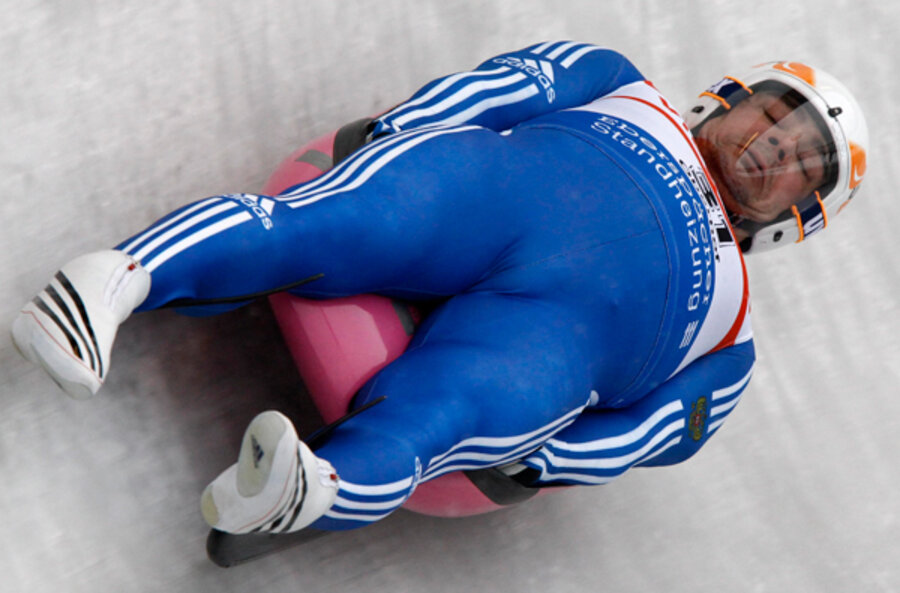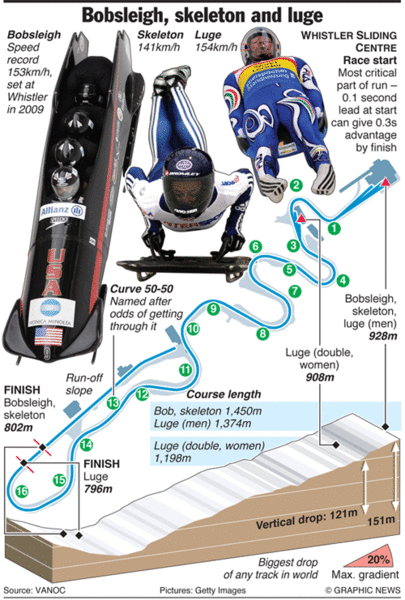Vancouver 2010 Olympic Games: Luge
Loading...
Competing on the speediest track in the world, look for “the fastest sport on ice” to clock some impressive runs in Whistler, British Columbia. Also keep an eye – if you can – on Erin Hamlin, the US woman who last year broke Germany’s 99-win streak. Will she fend off the most dominant team again?
Who to watch
Armin Zöggeler, ITA (see video)
Nicknamed “The Cannibal,” Zöggeler is the Roger Federer of luge. He won his first World Cup at age 15 and is a two-time gold medalist whose Olympic career dates back to 1994. And while he’s still going strong entering his fifth Games, he’s making sure the Zöggeler tradition will continue: Daughter Nina won her first race at age 7 in 2008, beating all the boys in her age group.
Erin Hamlin, USA (see video)
Hamlin, a no-nonsense athlete from Remsen, N.Y., is the breakout member of the US women’s team. In 2009, Hamlin broke the Germans' 99-year winning streak when she slid her way to a gold medal at the World Championships in Lake Placid, N.Y. Hamlin vs. Germany will likely be among the most intriguing luge stories at the Vancouver Games. Read more on her website.
Event Details
Click here for schedule and results.
There are three events in luge: men's singles, women's singles, and doubles. Singles take four runs over two days, while doubles teams compete twice on the same day. The athlete or team with the fastest total time wins.
Both luge and short track speed skating races are timed down to the thousandth of a second, making them the most precisely timed events of the Winter Games.
History
Luge is sledding for the overachiever. Catapulting down a mile-long track in less than one minute, luge athletes – called “sliders” – balance explosive power with tremendous control to showcase one of the most exhilarating sports in the Winter Games. The sleds have no brakes or steering mechanisms, and the athlete must hold his or her head and feet off the ice without any supportive devices – a challenging feat at speeds of up to 90 m.p.h., when gravitational forces can make one’s head feel as if it weighs 500 pounds.
Luge developed from 19th-century European sled racing and was refined by the Austrians during the 1930s. The sport was first included in the Olympics at the 1964 Innsbruck Games.
Luge Lingo
- Kufens: Fiberglass runners attached to steel blades at the front of the luge allowing the slider to steer. The sled is steered by applying pressure to these.
- Lose Your Head: when a competitor’s head is pulled back onto the ice by high G-forces.
- Paddle: Using spiked gloves, it is the action a slider uses after the start to propel themselves forward.
- Slider: A luge competitor, less commonly referred to as a luger.
Sources: nbcolympics.com, vancouver2010.com, Oxford Encyclopedia of World Sports, usaluge.org






